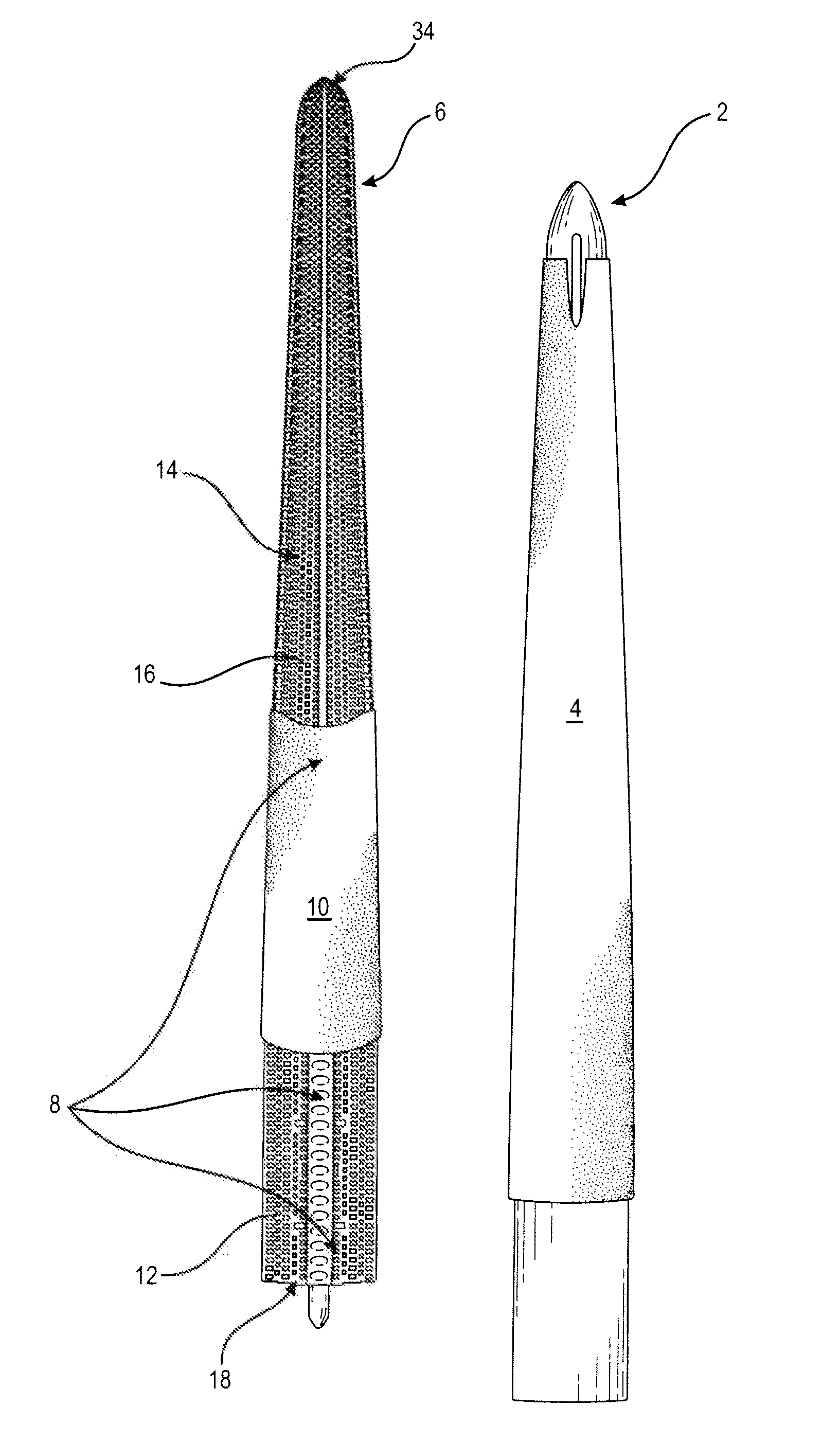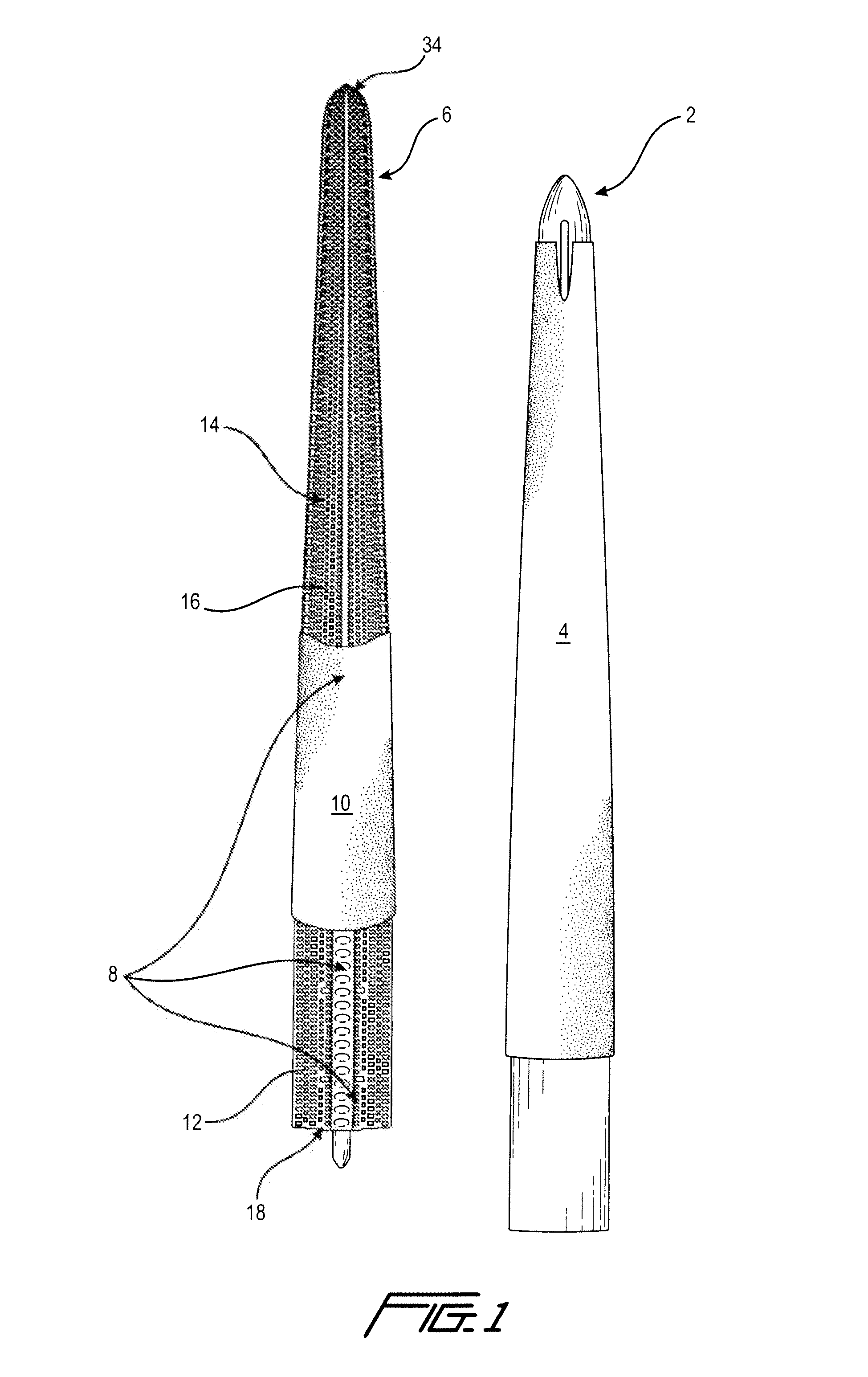Pelt drying assembly comprised of a sleeve/bag of fat and moisture absorbing material and a pelt board
a technology of sleeve/bag and pelt, which is applied in the direction of skin/hides/pelt mechanical treatment, leather manufacturing, skin/hides/leather/fur manufacturing apparatus, etc. it can solve the problems of reducing the value of holding bags, difficult to remove newspapers, and generating friction in holding bags, so as to reduce the price, facilitate handling, and improve the effect of friction
- Summary
- Abstract
- Description
- Claims
- Application Information
AI Technical Summary
Benefits of technology
Problems solved by technology
Method used
Image
Examples
Embodiment Construction
[0022]In FIG. 1 are shown examples of two types of distension elements / pelt boards. To the right is shown a traditional board 2 over which a known pelt bag 4 has been drawn which, in the illustrated embodiment, is made of fat absorbing paper. To the left is shown a modern distension element / pelt board 6 comprising a holding area 8, which is partly covered by a pelt bag 10 according to the invention. The modern board 6 is formed of two convex half-shells 12 joined together, with surfaces 14 which have a very open structure in the form of holes 16. Together, the half-shells 12 define a cavity which is open at the foot 18 of the distension element / pelt board 6.
[0023]FIG. 2 is a detail section of the distension element / pelt board 6, showing the lower end of the board 6 and the foot end 18. As is seen in the figure, in this embodiment of the board 6, the holding area 8 is formed by a part of the board nearest to its foot end 18, where the surfaces of the half-shells have a corrugation 22...
PUM
| Property | Measurement | Unit |
|---|---|---|
| length | aaaaa | aaaaa |
| shape | aaaaa | aaaaa |
| size | aaaaa | aaaaa |
Abstract
Description
Claims
Application Information
 Login to View More
Login to View More - R&D
- Intellectual Property
- Life Sciences
- Materials
- Tech Scout
- Unparalleled Data Quality
- Higher Quality Content
- 60% Fewer Hallucinations
Browse by: Latest US Patents, China's latest patents, Technical Efficacy Thesaurus, Application Domain, Technology Topic, Popular Technical Reports.
© 2025 PatSnap. All rights reserved.Legal|Privacy policy|Modern Slavery Act Transparency Statement|Sitemap|About US| Contact US: help@patsnap.com



